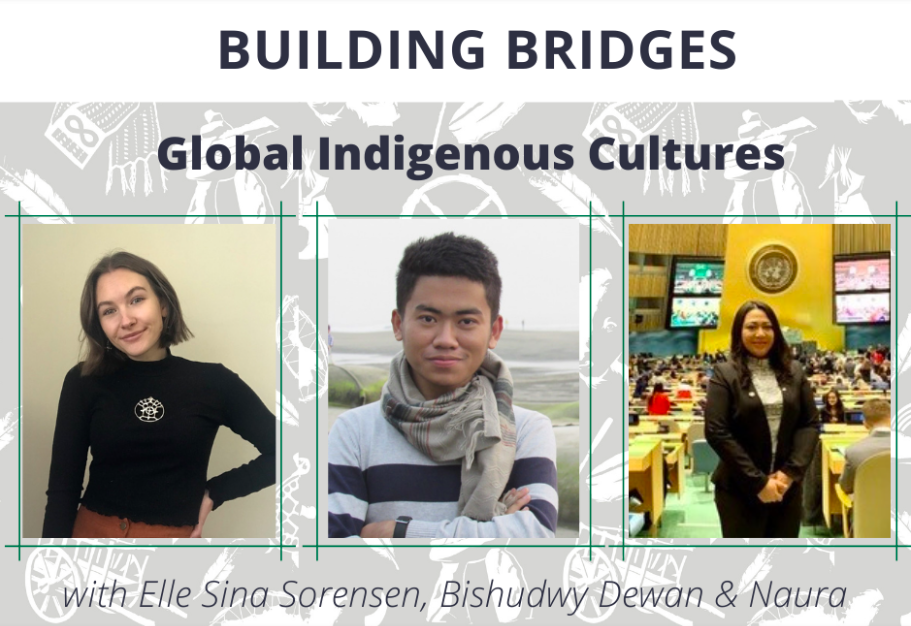
On Feb. 17, graduate students from the department of Indigenous studies at the University of Saskatchewan presented an online talk on how being Indigenous within their home countries inspired their current research.
The talk was hosted by Building Bridges, a program organized by the Aboriginal Students’ Centre and the International Student and Study Abroad Centre that aims to educate the USask community about Canadian and global Indigenous issues.
Building Bridges offers bi-weekly programs including cultural events for the USask community during the regular academic year, one of which was the Global Indigenous Cultures event.
The first speaker was Dewi Naura Vergustina, a PhD candidate at the University of Saskatchewan. Vergustina spoke about how being part of the Indigenous Javanese people in Indonesia influenced her activism for Javanese land rights.
While living in Indonesia, Vergustina established a non-profit organization that was centred around integrating Indigenous perspectives to make economic development more sustainable.
However, she feels that the Indonesian government has neglected Indigenous land rights and perspectives by moving the nation’s capital from Jakarta to Borneo Island — land that is inhabited by the Javanese people and other Indigenous groups.
“It can be a nightmare for the Indigenous minority that belongs to the island because they [could] lose their home, they [could] lose their forests, and right now they are homeless in their own land,” Vergustina said.
Vergustina’s PhD project addresses how the move of the Indonesian capital affects the Indigenous population.
The event’s second speaker, Bishudwy Dewan, also spoke about the experience of forced displacement of Indigenous communities.
Dewan is a master’s student in Indigenous studies at the U of S and a member of the Chākmā Indigenous community in Bangladesh. He provided a history of Bangladesh’s independence from Pakistan in 1971, followed by the government’s decision to move 400,000 settlers into the Chākmā native territory — a strip of land bordering Myanmar and Bangladesh.
Dewan recounted how settlers committed atrocities against the Chākmā people, including massacres, discrimination and persecution. He further described how his own family was affected during this period.
“I heard from my mother that they had to flee away from home to take shelter in the jungle, just because a military would raid the village,” Dewan said.
Though the Bangladesh government signed a peace treaty with the Chākmā people in 1997, Dewan says that the ethnic conflict remains.
When he attended university in Bangladesh, Dewan remembers people mislabelling his ethnicity and reading a history textbook that included stereotypes of his culture.
Upon moving to Canada, Dewan says that he didn’t see many Chākmā people in his community and felt very lonely. The experience eventually inspired him to pursue academic research on Chākmā cultural experiences.
Dewan’s master’s thesis examines common facets of the Chākmā immigrant experience, like loneliness, homesickness, language barriers and discrimination. His participants also discuss unique Chākmā childhood experiences like violence from the settlements and witnessing political instability.
Global Indigenous Cultures’ third speaker, Elle Sina Raanes Sørensen, another master’s student, shared her experience growing up as a Sámi person in Northern Norway.
The Sámi are an Indigenous group inhabiting Northern regions of Norway, Sweden, Finland and Russia, with a current population of around 80,000. They speak a unique Sámi language — a language belonging to the Finno-Ugric branch on the verge of extinction.
Because the Sámi have been a minority for so long, Sørensen recalls a lack of Sámi representation in the Norwegian education system growing up.
“We [Norwegian education system] had three years of high school and throughout all my three years, there was one paragraph in one history book that talked about Sámi people,” Sørensen said.
Sørensen feels that the first step to becoming more sensitive to the Sámi culture is to include more Sámi educational components in the Norwegian curricula.
“I think it’s important to implement more of these [Sámi] perspectives in elementary education so that you can start changing people’s minds when they’re kids… as a kid, you’re kind of open-minded,” Sørensen said.
—
Annie Liu | Staff Writer
Photo: Taken from USask Building Bridges via Facebook